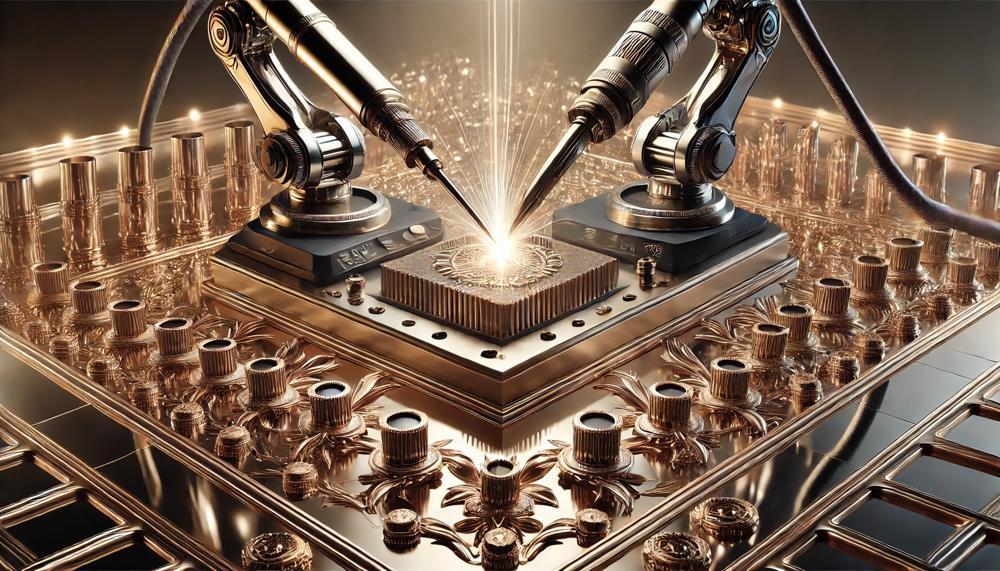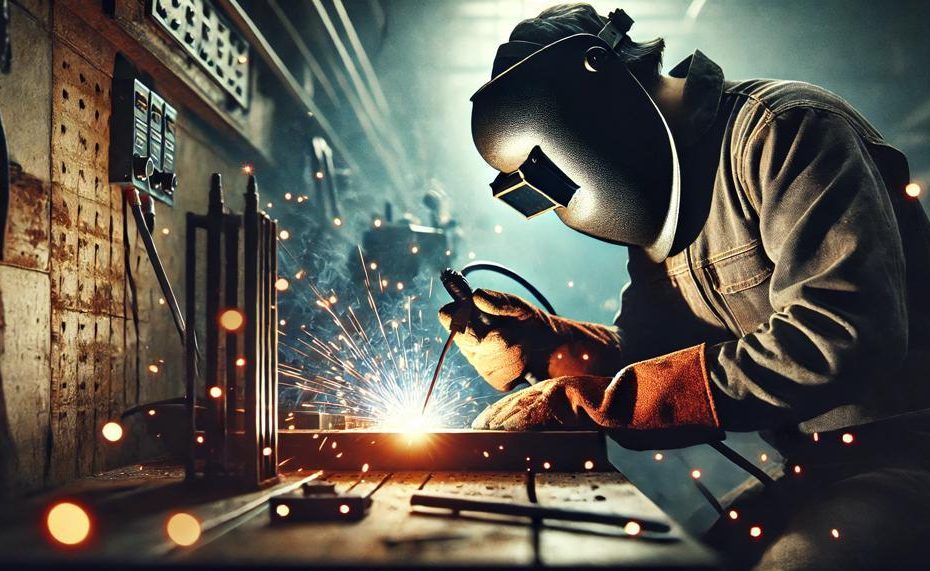In the mesmerizing world of metalwork, two techniques stand out for their ability to fuse materials together, yet in essence, they couldn’t be more different: soldering and welding. Imagine for a moment, the intricate dance of metals joining, where heat plays the lead role, but the steps of the dance – the temperature, the materials, the application – differ vastly. These processes are not just about melting metals; they are about precision, about the delicate balance between strength and subtlety, and about the enduring bonds they create.
Soldering and welding are both ancient arts that have evolved significantly with technology, finding their place in everything from delicate electronics to towering steel structures. Yet, for many, these terms are often shrouded in confusion. Let’s demystify these critical techniques, peeling back the layers to reveal what sets them apart and why it matters.
Key Takeaways:
- Temperature Territory: Welding operates at higher temperatures, directly melting the base metals, whereas soldering uses a lower temperature to melt a filler material that bonds the pieces.
- Strength and Scope: Welding forms a stronger bond, suitable for structural applications, while soldering is ideal for electrical connections and delicate assemblies.
- Filler Fundamentals: Soldering relies on a separate filler material to join metals, contrasting with welding, where the base metals themselves are fused.
- Technical Toolbox: Welding requires extensive equipment and protective gear due to its high heat and intensity, while soldering calls for a more modest setup, making it accessible for hobbyists and professionals alike.
This introductory exploration serves as your gateway to understanding these vital metal-joining techniques. Whether you’re a seasoned artisan or a curious novice, knowing the difference between soldering and welding illuminates the path to mastering the art of metalwork. Let’s ignite our torches and delve into the captivating world of metal joining, where heat, materials, and skill combine to create enduring connections.
Contents
In Brief: Welding vs. Soldering
Welding and soldering stand as distinct methods in the realm of metal joining, each suited to varied project needs based on temperature, skill, and material compatibility. Here’s a crisp overview:
| Aspect | Welding | Soldering |
|---|---|---|
| Heat Required | Extremely high (up to 6,500°F) | Much lower (up to 850°F) |
| Skill Level | Demanding, with a steep learning curve | More accessible, requires less expertise |
| Material Compatibility | Stainless steel, mild steel, aluminum, alloys | Aluminum, copper, lead, silver, tin, zinc alloys |
| Common Uses | Industrial, automotive, heavy metal constructions | Electrical contacts, plumbing, delicate metalwork |
| Equipment | Welding torch, gas or electric power source | Soldering iron, flux or solder wire |
| Joint Effect on Metal | Can alter mechanical properties due to high heat | Less impact, preserves original properties |
Welding excels in heavy-duty applications where strength is paramount, such as in constructing buildings or automotive repair. Its high-temperature process fuses metals directly, creating robust joints but requires deft skill and protective measures against the intense heat and light.
Soldering, conversely, is the go-to for projects demanding precision over brute strength, like in electronic circuitry or fine metalwork. It bonds metals at lower temperatures using a filler material, safeguarding delicate components from heat damage. Soldering is simpler, making it more approachable for hobbyists and professionals working with intricate details.
Choosing between welding and soldering hinges on assessing the project’s scale, material, and desired strength of the joint.
Overview of Welding
The stark contrast between soldering and welding primarily lies in the temperature requirement and the manner in which the metal parts are joined. To lay it out in a digestible format:

| Aspect | Welding | Soldering |
|---|---|---|
| Temperature | High – enough to melt the base metals | Lower – melts only the filler material |
| Metal Joining Process | Base metals are melted together | Filler material (solder) joins the parts without melting the base metal |
| Application | Suitable for load-bearing structures and heavy-duty connections | Ideal for delicate jobs like electronic circuits where precision is key |
Welding melds the very soul of the pieces, forging them into one through a dance of high heat and molten metal.
Overview of Soldering
The primary distinction between soldering and welding lies in their approach to joining metal parts:
| Aspect | Soldering | Welding |
| Temperature | Lower temperatures | Higher temperatures |
| Melting of Base Metal | Does not melt the base metal | Melts the base metal |
| Material Joined | Filler material (solder) melts | Workpiece and filler material (if used) melt |
| Strength of Joint | Lesser, suited for delicate tasks | Greater, for load-bearing structures |
| Applications | Electronics, plumbing | Construction, automotive |
In welding, the heat is intense enough to fuse both the workpiece and a filler material (if used), resulting in a robust, load-bearing joint. Soldering, conversely, involves lower temperatures that melt only the solder – a specialized filler material – without affecting the base metal, creating a bond suitable for delicate tasks, such as in electronic circuits or plumbing.
Key Differences between Welding and Soldering
The key distinctions between welding and soldering hinge on their respective processes, the materials utilised, and their applications. This comparison sheds light on why one might be chosen over the other, depending on the task at hand.
| Aspect | Welding | Soldering |
|---|---|---|
| Process | Joins materials by melting the base metals, often adding a filler material to form a strong joint. | Bonds materials by melting a filler metal (solder) at lower temperatures, without melting the base metals. |
| Temperature | Requires high heat (up to 6500°F) to melt the workpieces and filler metal. | Operates at lower temperatures (up to 840°F), melting only the solder. |
| Materials Used | Can weld a wide array of metals like stainless steel, aluminum, and mild steel. | Typically uses softer metals as filler materials, such as alloys of tin, lead, silver, and copper. |
| Applications | Used in heavy-duty constructions, automotive manufacturing, and where structural integrity is crucial. | Ideal for electrical circuits, jewelry making, and joining thin or delicate metals. |
| Skill Required | Demands higher skill level due to complex parameters and high temperatures. | Relatively easier to learn and execute with basic equipment. |
Welding melds the very essence of the materials, creating joints capable of bearing substantial loads and enduring harsh conditions. It’s a technique where the ferocity of fire meets the finesse of craftsmanship, suited for projects demanding strength and durability. Soldering, on the other hand, is akin to a gentle whisper that unites metals without altering their core, perfect for intricate work where precision outweighs brute strength.
This stark contrast in process and application underscores the importance of choosing the right method for your project.
Conclusion
In the realm of metal joining, the distinction between soldering and welding is both profound and pivotal, casting light on the intricate art of fusing metals. Welding, with its intense heat, melds the very essence of metals, forging powerful joints capable of withstanding the rigors of heavy-duty applications, from towering constructions to the backbone of automotive integrity. It demands not only a mastery of skill but also a dance with high temperatures and complex equipment, embodying strength and durability in the creation of load-bearing marvels.
Soldering, in contrast, offers a delicate touch, a whisper of heat that bonds metals without altering their core, ideal for the precision required in electronic circuits and the beauty of jewelry making. It operates at the gentler end of the temperature spectrum, using a filler material to create connections that, while not as robust as those forged by welding, are perfect for tasks demanding subtlety over sheer force.
This nuanced dance between the fierce blaze of welding and the gentle warmth of soldering underlines the critical choice makers face, guiding them in selecting the method that best fits the nature and needs of their projects.





